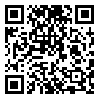Volume 15, Issue 12 (March 2022)
Qom Univ Med Sci J 2022, 15(12): 844-851 |
Back to browse issues page
Download citation:
BibTeX | RIS | EndNote | Medlars | ProCite | Reference Manager | RefWorks
Send citation to:



BibTeX | RIS | EndNote | Medlars | ProCite | Reference Manager | RefWorks
Send citation to:
Heidarkhan Tehrani S, Jalali Ara A, Mehdizadeh A R, Ghadimi N. The Use of Panoramic Radiography and Cone-Beam Computed Tomography in Diagnosing Bifid Condyle: A Case Report. Qom Univ Med Sci J 2022; 15 (12) :844-851
URL: http://journal.muq.ac.ir/article-1-3361-en.html
URL: http://journal.muq.ac.ir/article-1-3361-en.html
1- Department of Oral and Maxillofacial Radiology, Faculty of Dentistry, Islamic Azad University, Tehran, Iran.
2- Department of Oral and Maxillofacial Radiology, Faculty of Dentistry, Islamic Azad University, Tehran, Iran. ,a.j_ara@yahoo.com
2- Department of Oral and Maxillofacial Radiology, Faculty of Dentistry, Islamic Azad University, Tehran, Iran. ,
Abstract: (1491 Views)
Background and Objectives: Bifid condyle is a rare anomaly in mandible with unknown etiology. Patients with this anomaly may have symptoms but they are usually asymptomatic and it is accidently found in routine radiographic examinations. In recent years with development of three-dimensional (3D) imaging modalities, the reported cases of bifid condyle have extremely increased. This article presents the report of two different cases of this anomaly which were diagnosed using panoramic radiography and cone-beam computed tomography (CBCT) techniques.
Case Report: The first case was a 35-year-old man without any clinical symptoms referred to obtain panoramic radiography for routine dental checkups. Unilateral bifid condyle was accidentally found in panoramic view. The second case was a 40-year-old woman with chief complaint of pain in temporomandibular joints (TMJs) on both sides. There were no signs of abnormality of condyle in clinical examinations and panoramic radiography. Thus, for further assessment, CBCT images were obtained and the presence of bilateral bifid condyle was confirmed.
Conclusion: Since two-dimensional radiographs such as panoramic images have less accuracy in diagnosing the anomalies of TMJ, the 3D imaging modalities such as CBCT can be the gold standard for better assessment and definite diagnosis, especially in symptomatic patients.
Case Report: The first case was a 35-year-old man without any clinical symptoms referred to obtain panoramic radiography for routine dental checkups. Unilateral bifid condyle was accidentally found in panoramic view. The second case was a 40-year-old woman with chief complaint of pain in temporomandibular joints (TMJs) on both sides. There were no signs of abnormality of condyle in clinical examinations and panoramic radiography. Thus, for further assessment, CBCT images were obtained and the presence of bilateral bifid condyle was confirmed.
Conclusion: Since two-dimensional radiographs such as panoramic images have less accuracy in diagnosing the anomalies of TMJ, the 3D imaging modalities such as CBCT can be the gold standard for better assessment and definite diagnosis, especially in symptomatic patients.
Keywords: Mandibular condyle, Anatomic variation, Radiography, Panoramic, Cone-beam computed tomography
Type of Study: CASE STUDY |
Subject:
راديولوژي
Received: 2022/01/7 | Accepted: 2022/02/14 | Published: 2022/03/1
Received: 2022/01/7 | Accepted: 2022/02/14 | Published: 2022/03/1
References
1. References
Hrdlicka A. Lower jaw: Double condyles. Am J Phys Anthropol 1941; 28(1):75-89. [DOI:10.1002/ajpa.1330280104] [DOI:10.1002/ajpa.1330280104]
2. Mallya SM, Lam E. White and pharoah's oral radiology: Principles and interpretation. New Delhi: Elsevier Inc; 2019. [Link]
3. Ertas ET, Sahman H, Atici MY. Bilateral bifid mandibular condyle: Report of a case with condylar fractures. J Oral Maxillofac Radiol. 2013; 1(2):80-2. [DOI:10.4103/2321-3841.120127] [DOI:10.4103/2321-3841.120127]
4. Borrás-Ferreres J, Sanchez-Torres A, Gay-escoda C. Bifid mandibular condyles: A systematic review. Med Oral Patol Oral Cir Bucal. 2018; 23(6):e672-80. DOI:10.4317/medoral.22681] [PMID] [PMCID] [DOI:10.4317/medoral.22681]
5. Kirthika R, Ramalingam B. Bifid condyle. Eur J Mol Clini Med. 2020; 7(3):1861-5. [Link]
6. Balaji SM. Bifid mandibular condyle: A study of the clinical features, patterns and morphological variations using CT scans. J Maxillofac Oral Surg. 2010; 9(1):38-41. [DOI:10.1007/s12663-010-0012-0] [PMID] [PMCID] [DOI:10.1007/s12663-010-0012-0]
7. Szentpétery A, Kocsis G, Marcsik A. The problem of the bifid mandibular condyle. J Oral Maxillofac Surg. 1990; 48:1254-7.[DOI:10.1016/0278-2391(90)90477-J] [PMID] [DOI:10.1016/0278-2391(90)90477-J]
8. Antoniades K, Hadjipetrou L, Antoniades V, Paraskevopoulos K. Bilateral bifid mandibular condyle. Oral Surg Oral Med Oral Pathol Oral Radiol Endod. 2004; 97(4):535-8. [DOI:10.1016/j.tripleo.2003.09.003] [PMID] [DOI:10.1016/j.tripleo.2003.09.003]
9. Ulutürk H, Yücel E, Okur B, Akinci O, Atac MS. Surgical management of a bilateral bifid condyle: Diagnosis, three-dimensional reconstruction, and treatment - a report of a case and review of the literature. Niger J Clin Pract. 2018; 21(2):251-5. [DOI:10.4103/njcp.njcp_389_16] [PMID]
10. Rostampour M, Rostampour M, Rostampour M, Mehdipour A. [Bifid Mandibular Condyle: A Case Report (Persian)]. Qom Univ Med Sci J. 2015; 9(1):75-7. [Link]
11. Bettoni J, Olivetto M, Bouaoud J, Duisit J, Dakpé S. Bilateral bifid condyles: A rare etiology of temporomandibular joint disorders. Cranio. 2021; 39(3):270-3. [DOI:10.1080/08869634.2019.1639284] [PMID] [DOI:10.1080/08869634.2019.1639284]
12. Quayle AA, Adams JE. Supplemental mandibular condyle. Br J Oral Maxillofac Surg. 1986; 24(5):349-56. [DOI:10.1016/0266-4356(86)90020-3] [PMID] [DOI:10.1016/0266-4356(86)90020-3]
13. Blackwood H. The double-headed mandibular condyle. Amer J Phys Anthropol. 1957; 15(1):1-8. [DOI:10.1002/ajpa.1330150108] [PMID] [DOI:10.1002/ajpa.1330150108]
14. Shriki J, Lev R, Wong BF, Sundine MJ, Hasso AN. Bifid mandibular condyle: CT and MR imaging appearance in two patients: Case report and review of the literature. Am J Neuroradiol. 2005; 26(7):1865-8. [PMID] [PMCID]
15. Fallon SD, Fritz GW, Laskin DM. Panoramic imaging of the temporomandibular joint: An experimental study using cadaveric skulls. J Oral Maxillofac Surg. 2006; 64(2):223-9.[DOI:10.1016/j.joms.2005.10.035] [PMID] [DOI:10.1016/j.joms.2005.10.035]
16. Ladeira D, Cruz A, Almeida S. Digital panoramic radiography for diagnosis of the temporomandibular joint: CBCT as the gold standard. Braz Oral Res. 2015; 29(1):1-7. [DOI:10.1590/1807-3107BOR-2015.vol29.0120] [PMID] [DOI:10.1590/1807-3107BOR-2015.vol29.0120]
17. Zhang ZL, Shi XQ, Ma XC, Li G. Detection accuracy of condylar defects in cone beam CT images scanned with different resolutions and units. Dentomaxillofac Radiol. 2014; 43(3):20130414. [DOI:10.1259/dmfr.20130414] [PMID] [PMCID] [DOI:10.1259/dmfr.20130414]
Send email to the article author
| Rights and permissions | |
 |
This work is licensed under a Creative Commons Attribution-NonCommercial 4.0 International License. |










